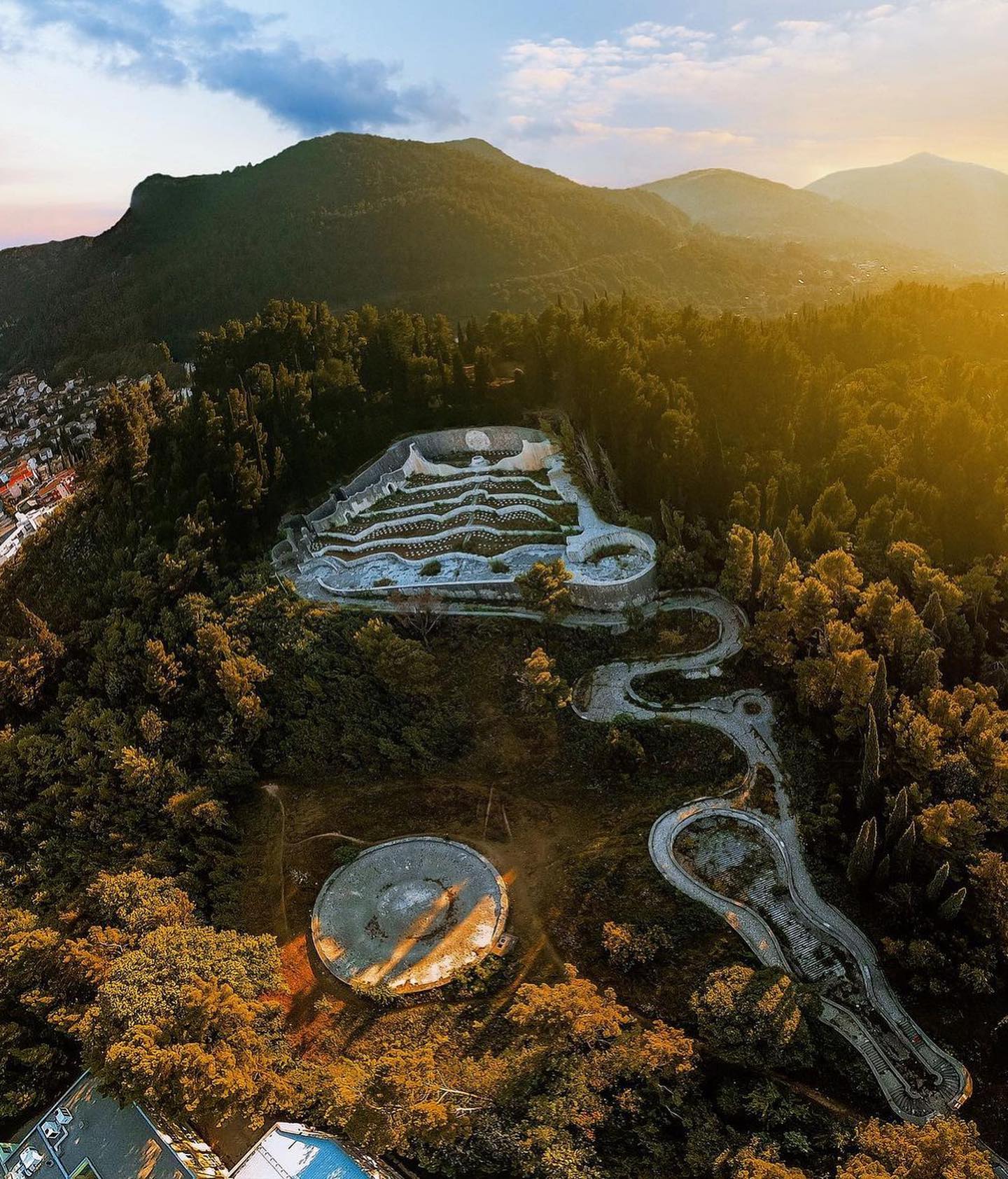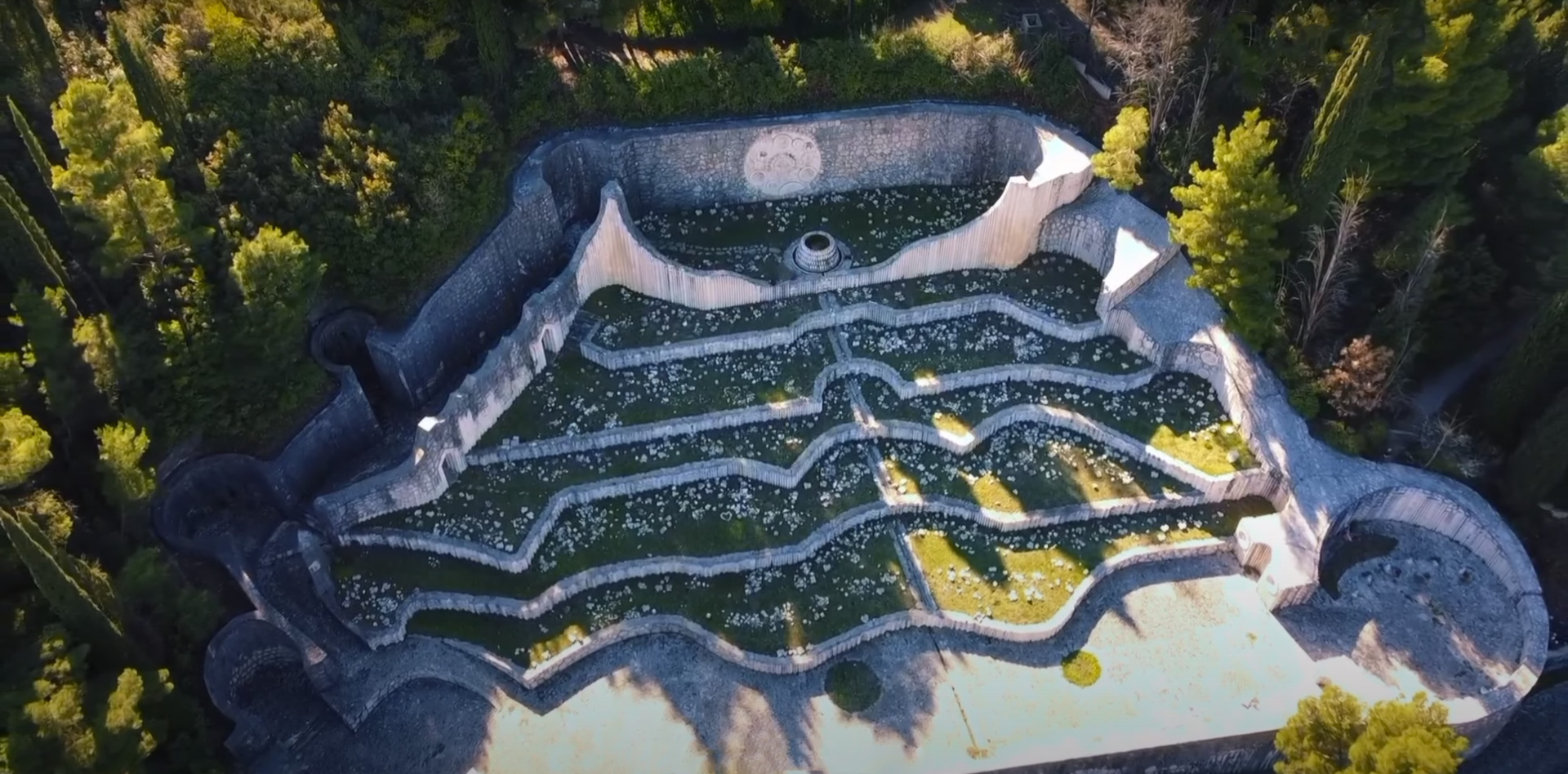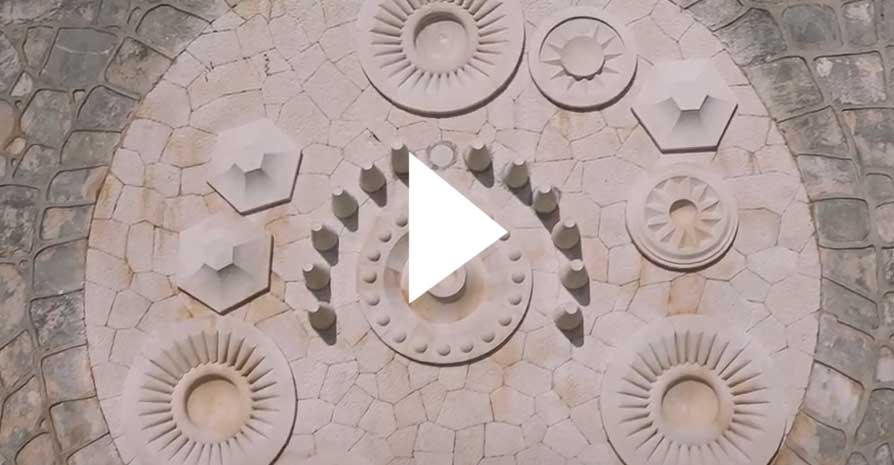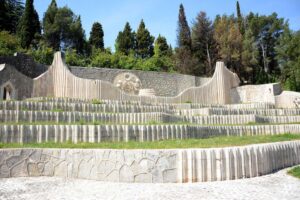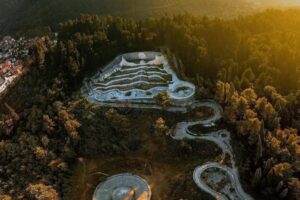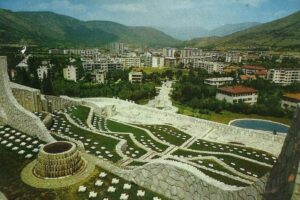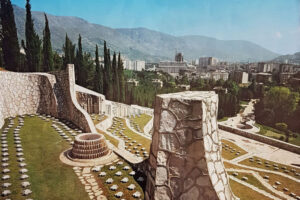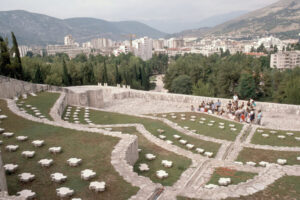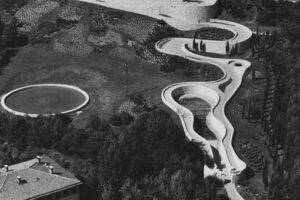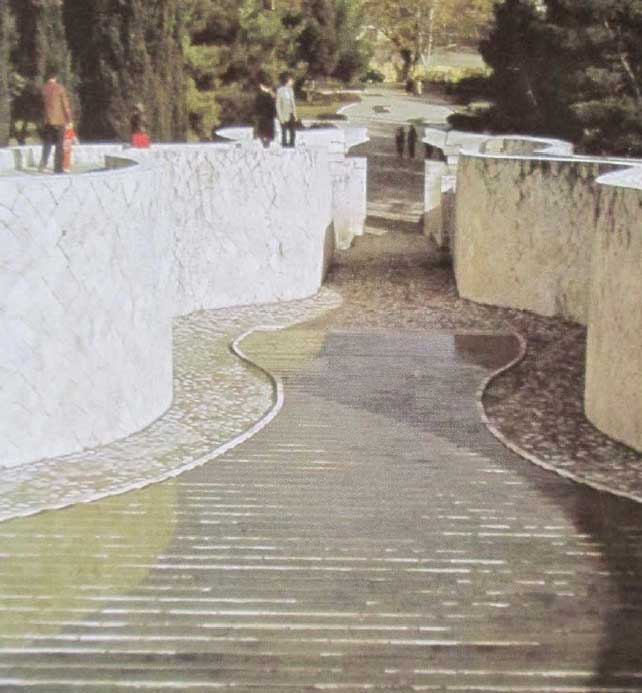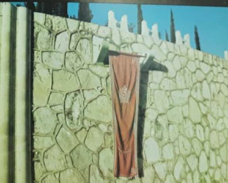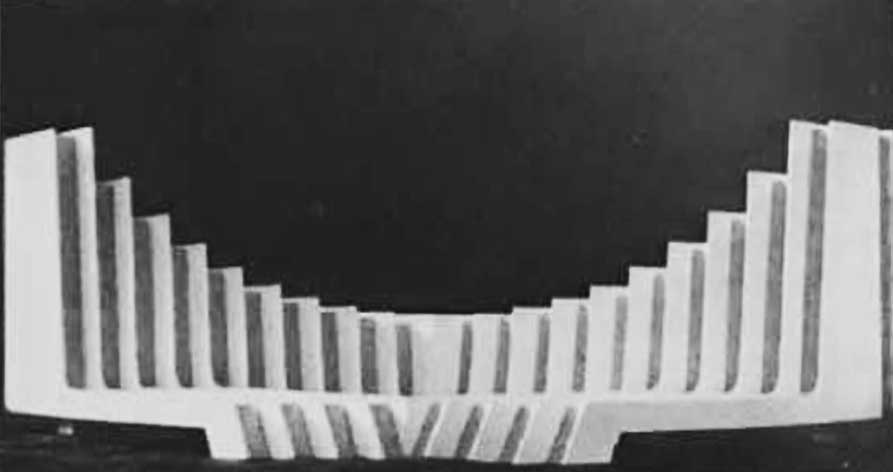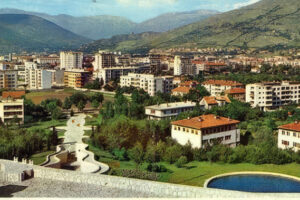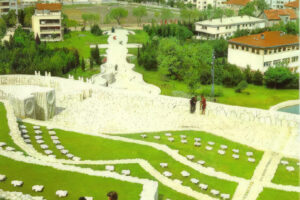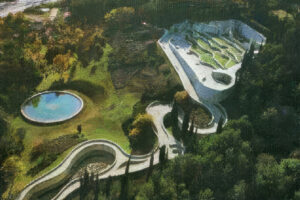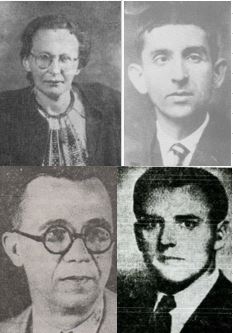Memorial
Partisan Memorial Cemetery (1965, Mostar)
The Partisan Memorial Cemetery commemorates the fallen fighters who sacrificed their lives in the fight against fascism. It is a symbol of anti-fascist resistance, liberation, and the desire for coexistence.
Built in the name of the fallen partisans of Mostar and all those who lived and acted with deep anti-fascist conviction, it is today one of the largest monuments to the People’s Liberation War and its victims in the territory of the former Yugoslavia and the Balkans.
Basic information:
- Conceptualized by SUBNOR (Association of survivign fighters) and Džemal Bijedić, a revolutionary and state official from Mostar and one of Josip Broz Tito’s closest associates.
- “An architectural wonder (…) arising from the visions of the architect, an artist of extraordinary talent and remarkable skill, a collective memory builder of our peoples, Bogdan Bogdanović.”
- Construction took place over 5-6 years, from 1959 to 1965. Master stonemasons from Korčula and Dubrovnik were hired to execute the works, alongside the masons from Posušje and Mostar.
- The monument mosaic incorporated 12,000 stone details and 1,193 square meters of stone slabs that the citizens of Mostar donated from their old dilapidated houses. Over 87,000 stone pebbles extracted from the bottom of the Neretva River cover an area of 871 square meters.
- 810 memorial plaques were planned, with names engraved on around 650+ of them, and the remains of many fallen anti-fascists were transferred to the memorial cemetery.
- The surrounding area around the Monument was reforested by the youth through voluntary work.
Source: Partisan Monument in Mostar, IKRO Prva književna komuna, Mostar 1980.

Everyone wanted to participate and help in any way they could, each in their own way and without reservation. Citizens contributed according to their means, some with money, and if they didn’t have money, they donated stones from their old family homes that had been seriously weathered by time.
Source


Who is buried at the Partisan Memorial Cemetery?
“According to the decision (of the Municipal Assembly, note), the mortal remains of those individuals who lived in Mostar before May 15, 1945, and lost their lives by that time will be buried in the cemetery. This includes individuals who were part of the Partisan Detachments of Yugoslavia (POJ), National Liberation Army and Partisan Units (NOVJ), and Yugoslav Army (JA), as well as those who actively participated in the National Liberation War (NOB), and those who were imprisoned, in camps or in internment, if they were captured or arrested while fighting and carrying out tasks of the People’s Liberation Movement (NOP), as well as those who were imprisoned or in camps in 1941 as members of the revolutionary movement. The mortal remains of fighters who served in the armed military formations of the anti-fascist movement and fought in other countries, as well as those who fought in the Allied armies after July 4, 1941, will also be buried. The decision provides detailed instructions on how the transfer of the mortal remains of fighters will be carried out…” (Mostar Chronicle, 1964, No. 50)
Access this and many other articles about the Partisan Memorial Cemetery here (in BSC).
“The monument construction project initially planned for 810 burial sites, but only 560 remains of fallen fighters were collected, including 8 national heroes. Their remains were placed in concrete chambers measuring 60x40x50 cm, below the grave markers, while the bones from mass graves were placed in a memorial ossuary in a semicircular niche where wreaths are laid.” Source: Commission to Preserve National Monuments (kons.gov.ba)
For the Partisan Memorial… it was necessary to consciously and skillfully integrate and unify: stone, water, greenery, light, and everything that is characteristic of Mostar.
Symbolism of Architecture
While building the necropolis of Mostar, I was carried away by a deep internal fire. I performed the not-so-simple and easy task without nausea or fatigue, and, in fact, captivated by a new understanding of life and death. It may sound absurd, but it was as if I hoped to share something of my secret joy with my “new friends,” whose names – Muslim, Serbian, Croatian – were just starting to line up on the terraces of the necropolis. Their small city of the afterlife, as I promised their families, gazed directly into the heart of old Mostar and the now-destroyed bridge of the supreme master Hajrudin…
The Partisan Necropolis was like a miniature Mostar, a replica of the city on the Neretva River, its ideal diagram. However, this ideogram of the city, this hieroglyph, this stone sign was not of insignificant dimensions. It took on the outlines of some of the more modest, pre-Balkan, Hellenic acropolises.

Water Organ

– Bogdan
Round Pool
… at the bottom, seemingly separate from the Monument, there is a large fountain without water jets. The calm green water symbolizes paying tribute to the fallen fighters. From the top of the Monument, from the terraces, looking at the serene water surface, the new Mostar is reflected in the fountain.
When filled with crystal-clear water, it irresistibly resembles the pupil of an eye, which in our language also carries a special meaning (it signifies something extremely dear and cherished).
Inside it, there are also six terraces shaped like roofs…
The connection of the Monument with the surroundings is particularly successful, as it is unclear where the stone ends and nature begins.
The terraces resemble the steep slopes of the Neretva River valley on which the city of Mostar is located.
Gate
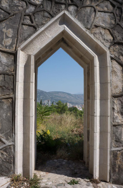
Perfectly integrated into the architecture of the region… A large number of stone slabs from old houses in which the fighters lived have been incorporated.

Fountain in the shape of a four-layered gear


A gear as a symbol of driving force – water flowed from it, cascading into a round basin at the bottom.
Memorial Ossuary
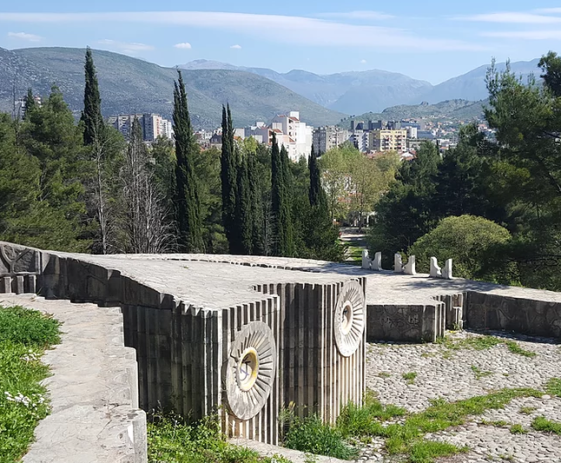
The remains of around 540 fighters who fell in battles across the country are buried in a collective memorial ossuary.
Serpentine
When a visitor starts ascending the first serpentine, they get a sense that in the central part of the Monument, mountain peaks, rugged and steep Herzegovinian cliffs, rise up.
Circle with a Shield (Cosmos)

… at the very top, like an eternal flame, there is a circle with a shield called “cosmos” with symbols of the sun, moon, and stars as the ultimate goal of humanity.

Partizansko Phase II
It is little known that a second phase of development was planned for the Partisan Monument – with a Museum of the Revolution. We are attaching a picture of the model according to Bogdan’s design: “The structure represents the final canvas that completes the entirety of the Partisan Monument in Mostar.”
Source: Partisan Monument in Mostar, IKRO Prva književna komuna, Mostar 1980.



“This monument, which carries the dead within itself (let us recall the motif of sacrifice in Zidanje Skadra na Bojani, one of the most beautiful and tragic poems in our folk poetry), was, although paradoxical at first glance, bright and joyful when placed in the city space and landscape alongside Mediterranean evergreen low-growing plants such as rosemary, lavender, green and gray cistus, and sage, as if reflecting the entire Herzegovina within itself – the canyon of a restless turquoise-colored mountain river, rugged and steep Herzegovinian cliffs, in other words, stone and water, greenery and light, everything characteristic of Mostar.” Source
Photo memories
What does the Partisan Memorial Cemetery mean to you?
How did you experience the Partisan Memorial during one of your visits? Describe your impressions – send us pictures, drawings, poems, articles, and essays.


